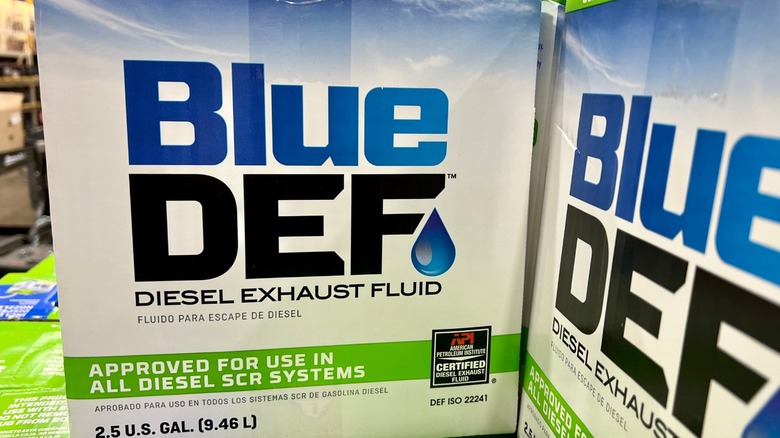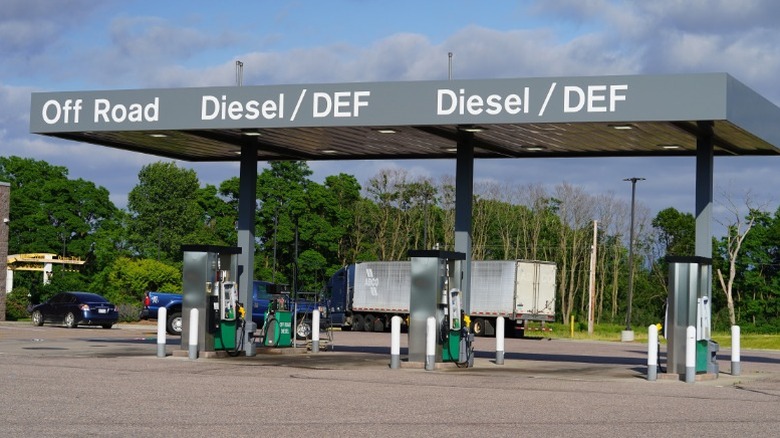Why Do Semi-Trucks Use DEF, And When Did It Become Mandatory?
The modern world relies on diesel fuel for everything from personal transportation and hauling products and goods across the country to powering construction equipment and farming implements. While diesel is a surprisingly efficient fuel source, it does have its drawbacks: namely, the fact that diesel engines produce a lot of harmful emissions as they run. Some of the most dangerous of those pollutants come in the form of NOx or nitrous oxides and diesel particulate matter. While manufacturers previously used recirculation systems to reroute some of these toxic emissions back through the engine, these days — and thanks to anti-pollution laws – all new diesels must use DEF or diesel exhaust fluid in conjunction with a selective catalytic reduction (SCR) system to help keep our air clean.
Diesel exhaust fluid is a solution of deionized water and industrial urea. It works with SCR systems to convert toxic pollutants like nitrous oxides into innocuous products like water vapor and nitrogen. The system works like this: exhaust gasses leave the engine after combustion and mix with DEF. The urea in the DEF interacts with the NOx emissions, causing a chemical reaction that changes the nitrous oxides into ammonia. Those gasses then travel through the SCR catalyst, which causes the ammonia to turn into harmless water vapor and nitrogen, allowing them to mix into the air we breathe without causing pollution or other adverse effects.
If you're curious about what diesel vehicles are required to use DEF and how long the mandate has been in effect, stick around. Here's when DEF became mandatory for semi-trucks and some information about the other vehicles that must use it.
When did DEF become mandatory for semi-trucks?
The use of diesel exhaust fluid has been mandatory for all new diesel vehicles built since 2010, according to guidelines put forth by the Environmental Protection Agency (EPA). That legislation encompasses diesel vehicles of all sizes, including passenger trucks and SUVS, as well as large 18-wheeler semi-trucks. These days, you can also regularly encounter other forms of diesel machinery, like farming, mining, and construction equipment, using DEF to cut down on emissions, too.
The EPA updated its DEF guidelines in 2014 to include recommended refill intervals. These intervals are based on the size of vehicle and stipulate that diesel drivers must refill their DEF tanks at least every 4,000 miles.
While the EPA guidelines apply to all new diesel vehicles, diesel cars and trucks built before 2010 may not be required to use DEF. However, the rules surrounding DEF are currently a bit fuzzy. In March 2025, Lee Zeldon, the head of Donald Trump's EPA, announced that the agency would be revisiting various regulations put in place in previous years and, potentially, removing numerous regulations regarding automotive emissions. While many diesel enthusiasts have jumped on the news as a sign that the end of DEF regulations could be near, the laws still stand for now. And if you own a diesel vehicle, you should continue following these guidelines, not only to avoid issues with local law enforcement and vehicle registration, but also to help keep our air clean.

